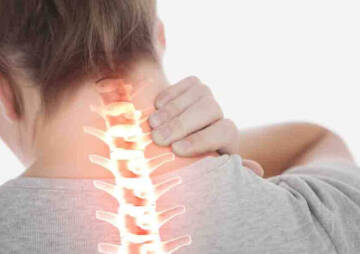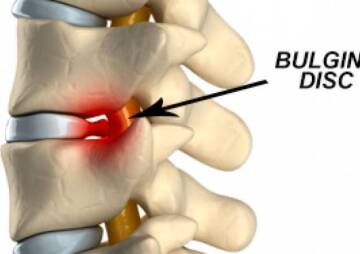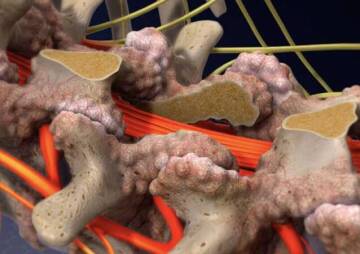-
Category
Craniomaxillofacial Surgery
Orthopedic Surgery
Spine Surgery
Orthopedic Implants
Hip Surgery
Knee Surgery
Pectus Excavatum
Bone Graft
Disinfectants
Healthcare
Back Surgery: When Do We Need One?

The necessity of undergoing a back surgery should always be decided after trying the nonsurgical options and processes like heat, ice, massage, etc. In cases where pain is directly related to mechanical problems in the spine and it is persistent
Back pain is a very common problem for everyone nowadays. Back surgery is said to be helpful in relieving the causes of back pain, but not always a necessity. Back pain can be relieved on its own, within three months. A back surgery can be an option in case the ordinary methods have not been working out for the patient and the patient still has pain in the back. Back surgery is considered a solution mainly when the back pain is disabling and persistent.
What Are the Signs You Need A Back Surgery?
The necessity of undergoing a back surgery should always be decided after trying the nonsurgical options and processes like heat, ice, massage, etc. In cases where pain is directly related to mechanical problems in the spine and it is persistent. Then, it is time to talk to a specialist regarding the surgery.
Back surgery is necessary when the nerves become compressed for many reasons, such as:
- Overgrowth in the bones: Bone spurs can happen on the spine of the patient due to osteoarthritis. This huge bone affects the hinge joints on the back area of the spinal column and narrows the space available for the nerves to pass through the openings in the spine.
- Disk problems: A herniated or a bulging disk – the cushions that are separating the spine’s bones, can sometime cause the spine to malfunction as they press tightly against the spinal nerve.
- Arthritis of the spine: Arthritis in the spine can cause several movements between the two vertebrae of the individual; hence, making the spine very unstable. If the condition continues and the patient does not cure the problem, it can cause spinal stenosis and narrowing of the spinal canal.
- Broken vertebrae: Usually, broken vertebrae can heal on their own without any treatment, but in case this does not happen, there is a need for spinal implants. Spinal implant will restore the stability and can fully heal the vertebrae.
It is not easy to tell the exact reason of back pain, even when the X-ray shows disk problems or even a bone spur.
Different Types of Back Surgery
There are different types of back surgery, such as:
- Discectomy: In this process the herniated portion of the disk is removed. This process helps in relieving the irritation and the inflammation of the nerve. Discectomy involves removal of either full or partial back portion of the lamina, and allows access to the ruptured disk.
- Laminectomy: In this type of surgery, the bone overlying the spinal canal is removed. After this process, the spinal canal enlarges and performs to relieve the nerve pressure caused by spinal stenosis.
- Fusion: With the help of spinal fusion, two or more bones are connected permanently in the spine. Pain is relieved by adding stability to the fracture on the spine in this case. Later, it occasionally eliminates painful motions between the vertebrae that are generated from an injured or degenerated disk.
- Artificial disk: It is an alternative for the treatment of fusion of the spine that causes pain due to the movement of the two vertebrae. The pain is because of the degenerated disk.
Before planning for either of the surgeries, consider a second opinion from a good and qualified spine surgeon Sometimes one might misinterpret symptoms as signs of needing a back surgery.
Spinal Implants
Spinal implants play a vital role in treating many forms of back pain and deformities. The primary functions of implants are to fuse two vertebrae together and to replace the natural disc material.
The functions of implants, according to the orthopedic and laser spine surgery definition, are:
- Correcting the deformities related to the spine.
- Improving and strengthening the stability of the spine.
- Facilitating the fusion of the two vertebrae.
Spinal implants are categorized as two groups:
- Fusion: This is a surgical process where a union is created between the bones, using a bone graft. Fusion spinal implants again fall under three groups, namely, cages, plates and rods.
- Cages act as a holder of space between the two vertebrae and become a part of the spine. After the surgery, the cages allow support and stability and they generally do not require orthopedic screws.
- Plates are normally attached to the screws and assist in stabilizing the movement of the spine.
- Rods help in stabilizing the spine as well and connecting with hooks and pedicle screws to the vertebrae.
- Non-fusion: These are an alternative to the traditional spinal fusions. They permanently affix two or more bones in the spine.
Like every surgery, spinal implant has its pros and cons.
Pros of Spinal Surgery
The implant will be an immediate ease of pain. It will be a rebirth for many and will allow them to continue their life normally. This implant is mainly considered when all other therapies and methods fail. Spinal implant is very cost-effective in the long run. The process will then allow the patient to wean off of the medicines and doctor’s visits.
Cons of Spinal Surgery
It is a surgery and has its risks and dangers. The point with spinal fusion is that it is very complicated, and it may not bond as well as anticipated. Additional surgeries may be required later. As this surgery changes the entire anatomy of the spine, there can be unforeseen affects later. There are risks of post-surgery infection as in all surgeries, but with proper guidance of the doctors and a proper precaution everything will be fine. Those against back surgery have other reasons why back surgery should be avoided, too.
Why Should Back Surgery Be Avoided?
Back surgery is not a simple surgery and holds huge risks. Not always the first surgery will give the best result, and there are chances of the pain returning or the need for the patient to undergo surgeries again. There are risks of infection, excess bleeding and injuries caused to the nerves. Apart from all these, there are few people who like to go under general anesthesia.
There have been cases where the pain was not cured post-surgery and it became even worse. The recovery after the surgery will take long, up to months. There are chances of the patient being paralyzed, as well as losing flexibility. Due to all these issues, patients are not advised directly to do the surgery. The alternative options are given to them, and if they fail to suit the problem, then surgery is advised.
There is no age limit for the back surgery, as back pain does not have any particular age; but it is seen mainly in elderly people. Patients who were above the age of 65 and 80 years old benefited from the back surgery and they continued their routine life normally. Hence, there is no age barrier for back surgery and spinal implants, and most back problems and spinal issues can be treated with the help of the surgeries and implants at any age group.
Last but not the least, it should be added, that the global market for spinal implant is expected to exceed up to more than 19.5 billion U.S dollars by the year 2024. The goals of the surgeons are to create smaller incisions, take shorter recovery time, and provide better service and outcome for the patients.
Further details about the spinal implants and the surgery can be searched on Health News Center website.
References : lumitex ,orthopedicandlaserspinesurgery , lumitex, orthopedicandlaserspinesurgery,







Great. I hope she gets well soon.
You got me when you said that spinal surgery can provide immediate ease of pain that will allow people to live their lives normally. I heard that my aunt is interested in undergoing surgery so she is looking for a reliable orthopedic surgeon. She mentioned that she has not been able to walk and stand properly for more than a month after encountering an accident that caused her bones to dislocate. I will share this with her to help her out.